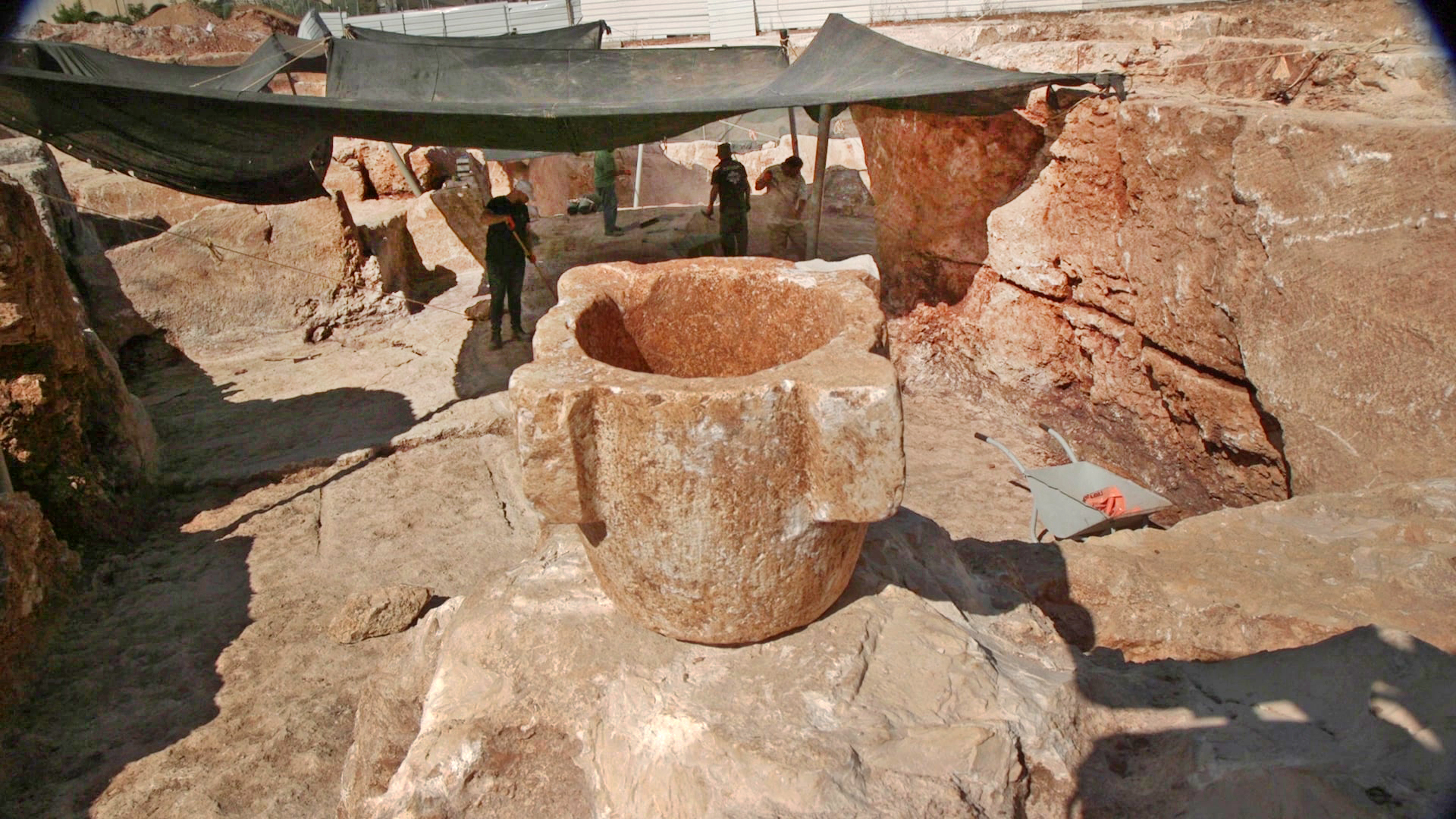Second Temple-era find includes unique objects signaling the quarry was used to supply Jerusalem’s Jewish population.
By World Israel News Staff
A huge quarry, one of the largest ever found in Jerusalem, dating from the end of the Second Temple period, was uncovered recently during an Israel Antiquities Authority excavation in the Har Hotzvim industrial area in Jerusalem.
The excavated area extends about 3,500 square meters and is just one section of a massive quarry.
Researchers say that a stone tool found at the site suggest that the quarry was used to supply the local Jewish population with stones, noting that this kind of tool could not under traditional Jewish law become impure and was widely used by the Jewish population during the Second Temple era.
During the excavation, the archaeologists uncovered dozens of building stones of various sizes, as well as cutting trenches whose outlines indicate the size of the blocks being quarried.
“Most of the building stones extracted from here were huge rock slabs, whose length reached ca. 2.5 meters, their width was 1.2 meters and they were 40 centimeters thick,” say Michael Chernin and Lara Shilov, excavation directors on behalf of the Israel Antiquities Authority.
“Each such quarried block weighed two-and-a-half tons! The impressive size stones this quarry produced likely attests to their intended use in one of Jerusalem’s many royal construction projects in the late Second Temple period, beginning under King Herod the Great’s reign between 37-4 BCE.”
King Herod’s construction projects in Jerusalem included, first and foremost, the expansion of the Temple Mount area and the Temple itself.
In addition, during his reign, a series of impressive public buildings – palaces and fortifications – were built throughout the city, requiring a huge supply of high-quality construction stones.
Monumental construction projects continued in the city under his successors as well, the most important of these projects was the construction of the city’s “Third Wall” by Herod’s grandson – King Agrippa I, who reigned between 37-44 CE.
“It is reasonable to assume, with due caution, that at least some of the building stones extracted here were intended to be used as pavement slabs for Jerusalem’s streets in that period,” say Chernin and Shilov.
“In another Israel Antiquities Authority excavation ongoing for the past few years in the City of David, the archaeologists discovered a paved street (the ‘stepped street’ – the ‘Pilgrim’s Road’) which is also dated to the late Second Temple period, under the rule of successive Roman Procurators – amazingly, it turns out that the paving stones of this street are exactly the same size and thickness, and share the identical geological signature as the stone slabs that were extracted from the quarry now being exposed in Har Hotzvim.”
In one corner of the quarry, the archaeologists were surprised to discover a stone vessel, hidden in that corner for two thousand years, was discovered almost by chance by archaeologist Alex Pechuro.
“This is a stone purification vessel of the type that served the Jewish community during the Second Temple period,” explains Lara Shilov. “It is possible that it was produced on the spot in the quarry itself, or was especially brought to the site for the benefit of the workers.”
The current excavation reveals another aspect of Jerusalem’s history during its golden age shortly before its destruction by the Romans in 70 CE.
According to Dr. Amit Re’em, Israel Antiquities Authority Jerusalem District Supervisor: “We are working tirelessly, together with the developer Vitania, to preserve and present the quarry and integrate it into the planned commercial complex which will be erected here.”
“In this manner, the entire public will gain a lasting impression of this tremendous enterprise’s grandeur – quarrying the building stones for Jerusalem when the Second Temple was standing.”
According to Eli Escusido, Israel Antiquities Authority Director, said: “Revealing this huge quarry, just before the Nine Days and the Ninth of Av, the time of year when the Jewish People the world over mourns the Jerusalem that was lost in these days, is symbolic and very moving.”




